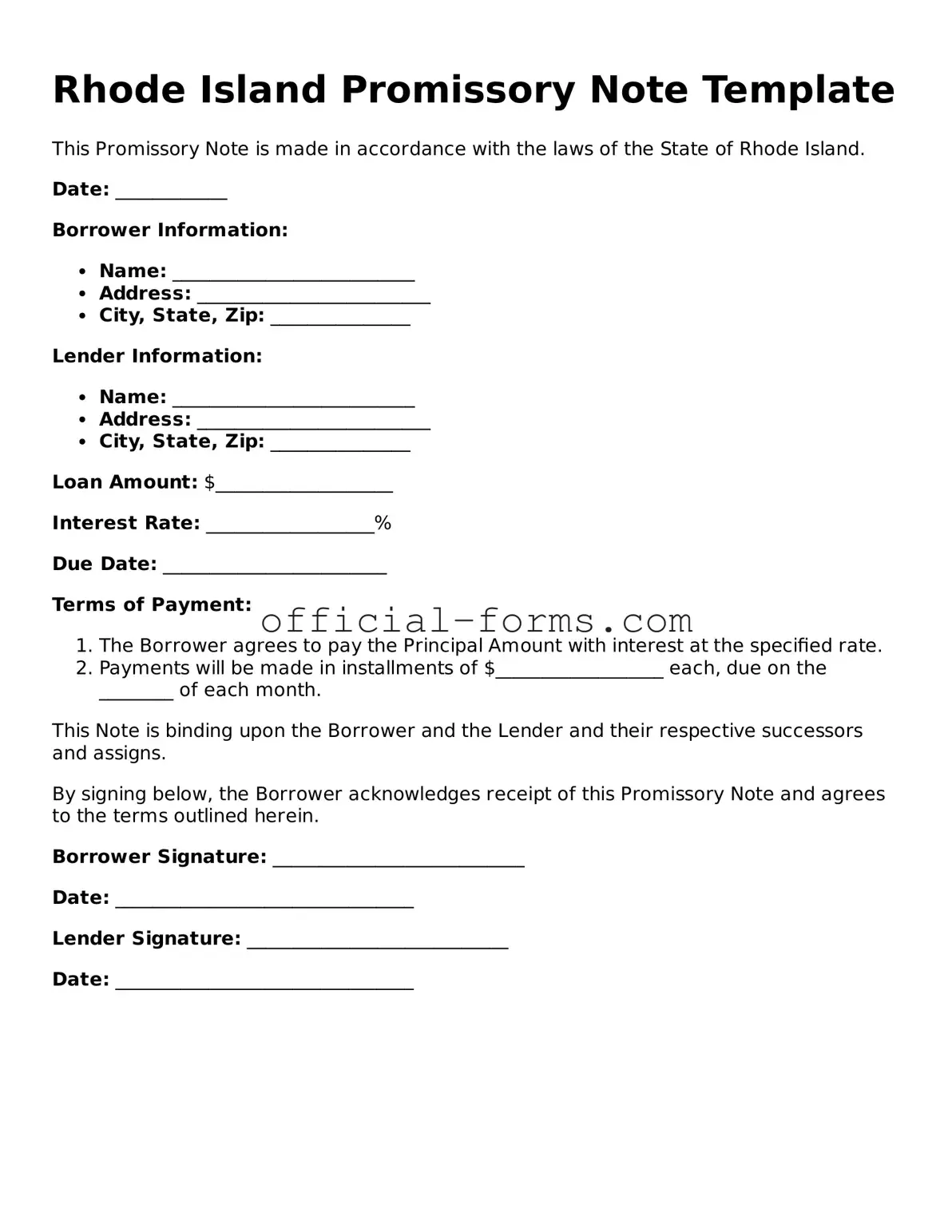When completing the Rhode Island Promissory Note form, many individuals overlook crucial details. One common mistake is failing to include the correct names of the parties involved. It’s essential to ensure that both the lender and the borrower are clearly identified. Any ambiguity can lead to confusion or disputes down the line.
Another frequent error is neglecting to specify the loan amount. This figure should be clearly stated in both numerical and written form. Omitting this detail can create uncertainty about the terms of the agreement.
People often forget to include the interest rate. If applicable, the interest rate must be clearly indicated. Without it, the terms of repayment may become unclear, leading to misunderstandings between the parties.
Many individuals fail to outline the repayment schedule. It’s important to detail when payments are due and the method of payment. A vague repayment schedule can result in missed payments and potential legal issues.
Another mistake is not providing a clear description of any collateral involved. If the loan is secured by collateral, it should be explicitly described in the document. This protects both parties in case of default.
Some people overlook the need for signatures. Both the lender and the borrower must sign the document for it to be legally binding. Without these signatures, the note may not hold up in court.
Additionally, individuals often forget to date the document. The date of signing is crucial as it establishes the timeline for the agreement. A missing date can complicate enforcement of the terms.
Lastly, failing to keep copies of the signed note is a common oversight. Both parties should retain a copy for their records. This ensures that everyone has access to the agreed-upon terms in the future.
